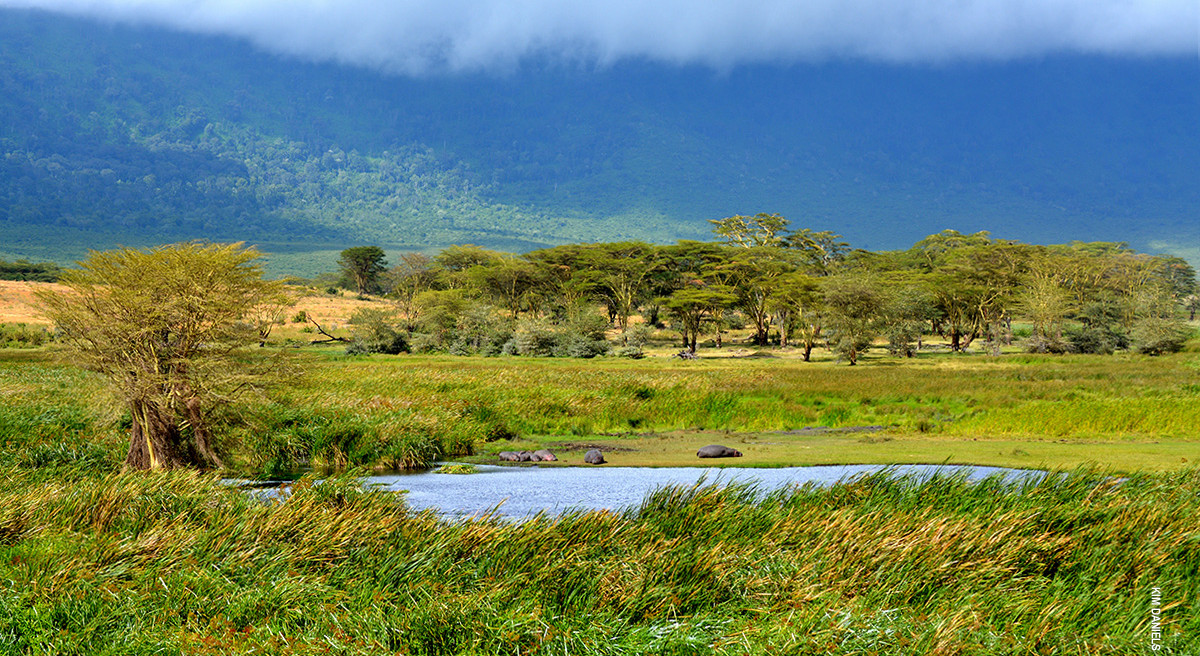Ngorongoro conservation Area
A HUB OF NATURAL WONDER
Ten miles wide, twelve miles long and about 3 million years old, Ngorongoro Crater was once a volcano–now it’s this conservation area’s namesake and a natural paradise. It’s one of the largest unbroken (and extinct) calderas in the world, and it’s packed to the rim with 30,000 animals, including elephant, hyena, lion, hippo and flamingo. For visitors to Tanzania, Ngorongoro Crater is a must-see.
Steep, forested walls tower 2,000 feet above the crater floor, providing incredible views of the lakes, forests, swamps and springs below. One of the main draws beyond the geography is the chance to see the critically endangered black rhino–about 30 inhabit the crater.
This lush, mineral-rich caldera attracts ungulates such as the wildebeest, gazelle, zebra, waterbuck and eland. It’s one of the only places where you can see Africa’s Big Five in one day. Some of the biggest elephants on the continent reside here, counting around 300 total. Lions in the area can often be found hunting–providing exciting opportunities to witness a predatory-prey encounter close-up.
Outside the crater and the highlands is Olduvai/Oldupai Gorge, one of the most important prehistoric sites in the world. The fossils discovered here by anthropologists Louis and Mary Leakey in 1959 are believed to be some of the earliest known evidence of human ancestry, dating back nearly 2 million years.
Taken as a whole, the Ngorongoro Conservation Area’s density of world-renowned sites simply has no equal. Between the Crater, the Highlands and Olduvai Gorge, guests have unprecedented access to the natural world as it was in ancient history.






